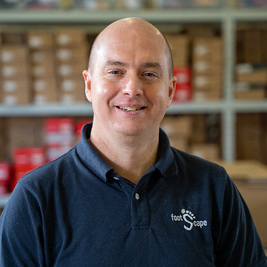Collaboration is a process described by Taylor et al (2021), through which organisations who have different perspectives about an issue or who can address different aspects of it, can constructively search for solutions together. Importantly, the solutions will go beyond one partner’s own limited vision of what is possible and intervene across more than their own scope of practice.
Why is this relevant to Footscape? As a podiatry charity with finite resources, Footscape recognises the importance of collaboration in our strategic plan.
Collaboration is everything
To date, collaboration with like-minded health and welfare organisations has given the opportunity for Footscape to reach and assist thousands of people across Australia who are experiencing disadvantage and encountering foot pathology.
Indeed, Footscape has proudly distributed over 40,000 items of podiatry material aid. This includes footwear, socks, foot care kits and orthotic devices to identified people who are experiencing homelessness, asylum seekers, Aboriginal persons, financially disadvantaged children and people who have experienced domestic violence.
An example up close
How have we been able to do this? By collaborating with over fifty affiliate organisations. The end result is that people who need help can get it. Podiatrist Rebecca Mannix shares some insights into what this can translate to.
People that experience homelessness use their feet as their primary mode of transport – to get food, attend appointments, for exercise to reduce stress or even to keep warm when it’s cold. It’s not uncommon for clients to report walking 10 to 15 kilometres every day, which can put stress on their bodies, especially if they are carrying all of their possessions.
Often our clients report their shoes getting stolen when they are asleep, which means that many wear their shoes all night, and this can lead to bacterial infections – particularly if feet are wet.
Footscape’s generous provision of high-quality second-hand shoes has greatly improved our ability to support these clients as they work to achieve their goals. For many clients this reduces their pain levels greatly and they are able to get back into walking. Others join our football team (Cohealth Kangaroos) and use the runners for training. This in turn improves their health, self-esteem, and builds healthy friendships alongside learning skills such as anger management and working as a team.
Without Footscape this would be impossible and we are extremely grateful, as are our clients.
This affects us all
Baum (2016) articulates that if public health is to be effective in the future, then an essential skill for practitioners is to be able to collaborate with people, organisations and sectors. This applies to all of us, no matter what our role.
The required skills appear to be flexibility, willingness to question current practice, an entrepreneurial approach to problem-solving and a willingness to take risks and step around bureaucratic blocks.
Accordingly, podiatrists working with disadvantaged communities in the far corners of the country are strongly encouraged to reach out to Footscape and benefit from prompt access to material aid items to help their clients.




